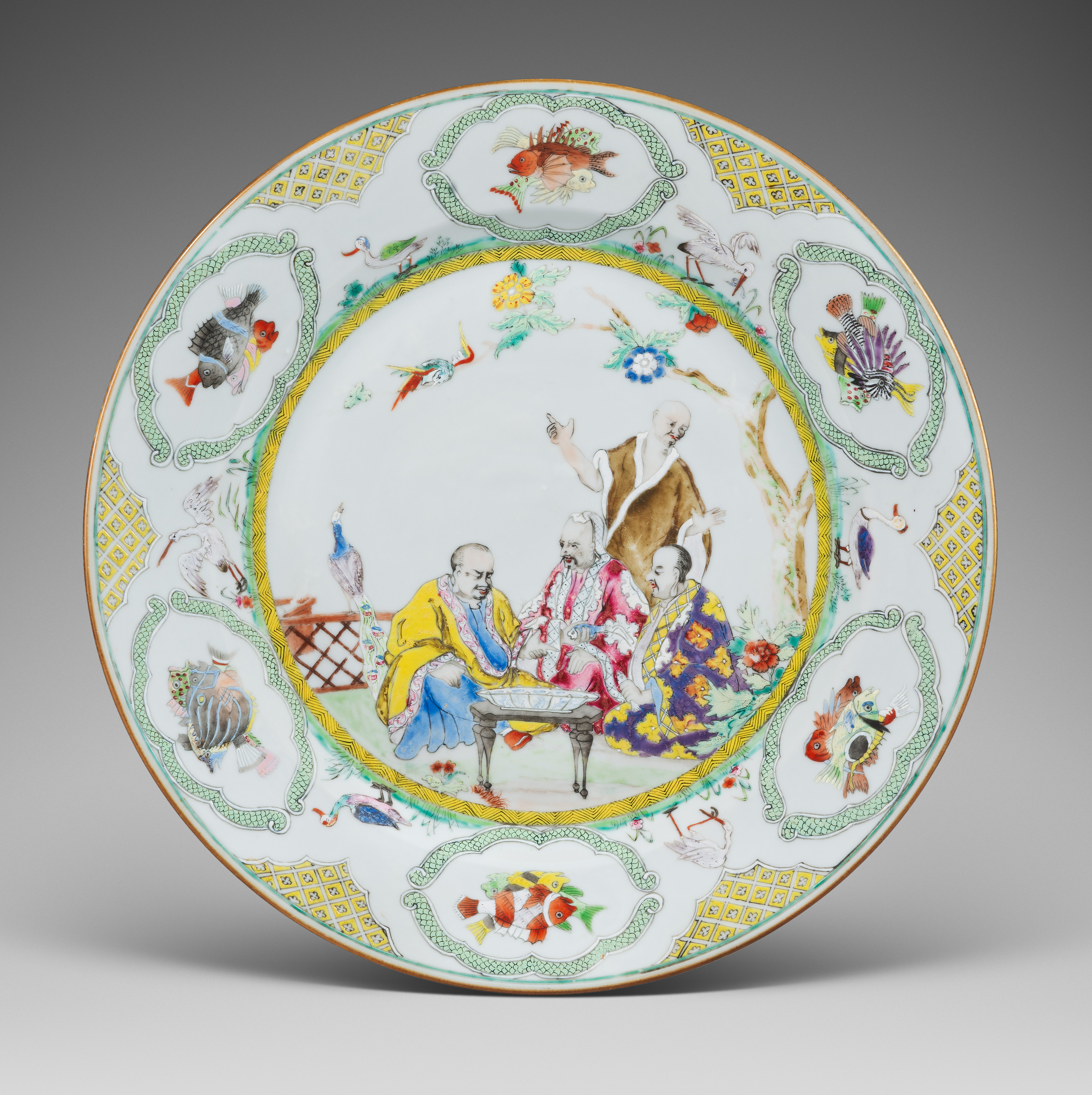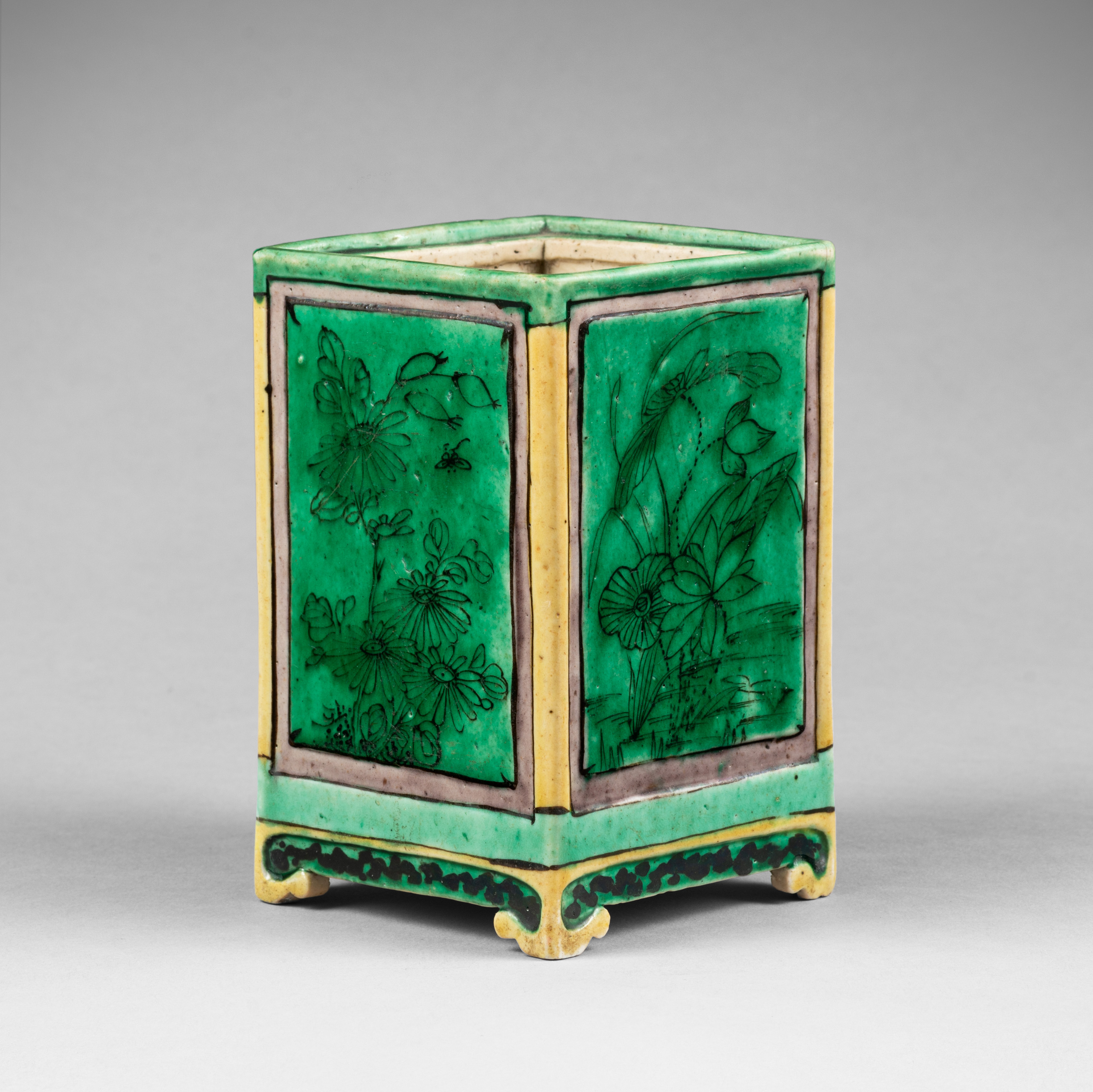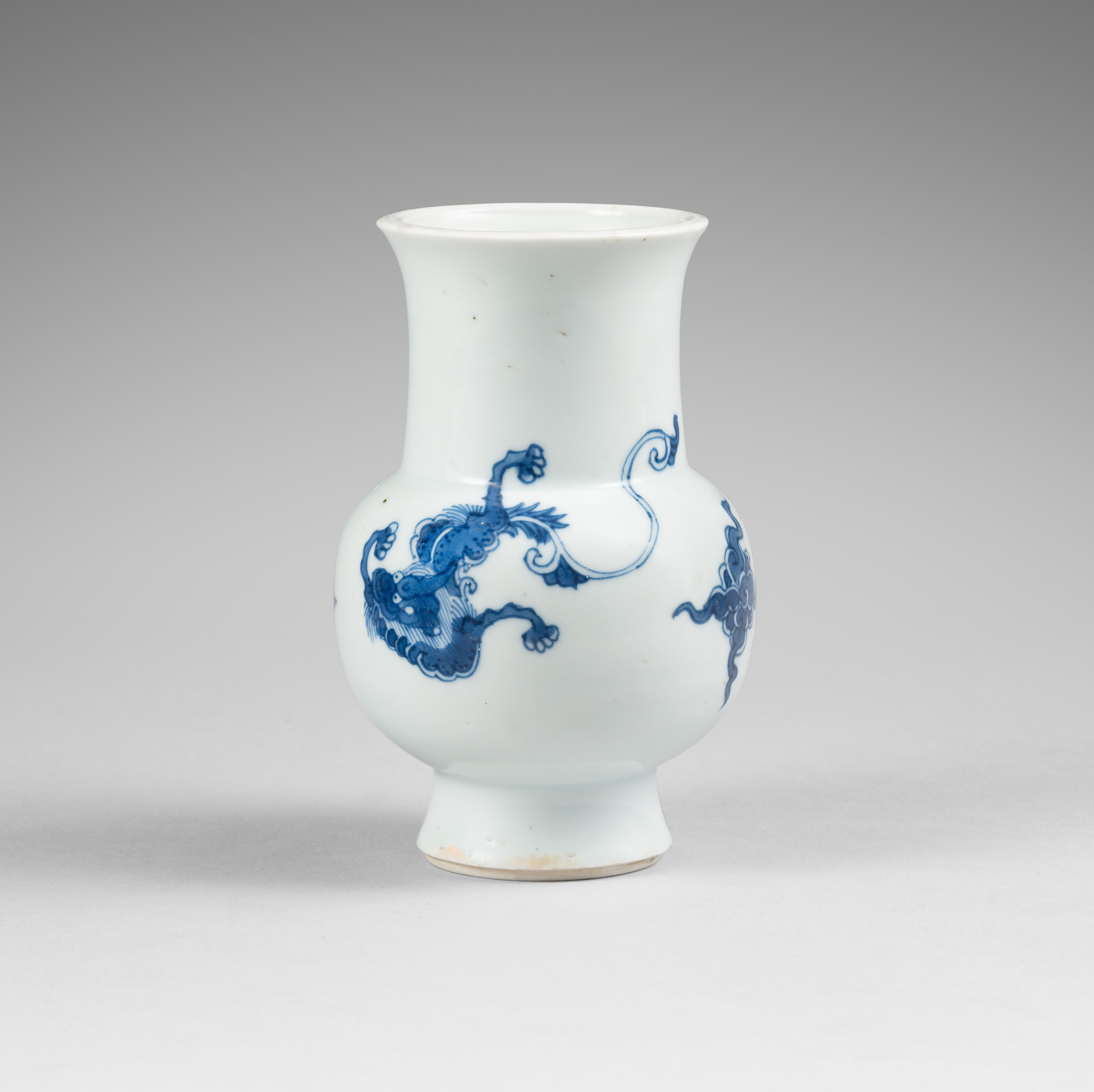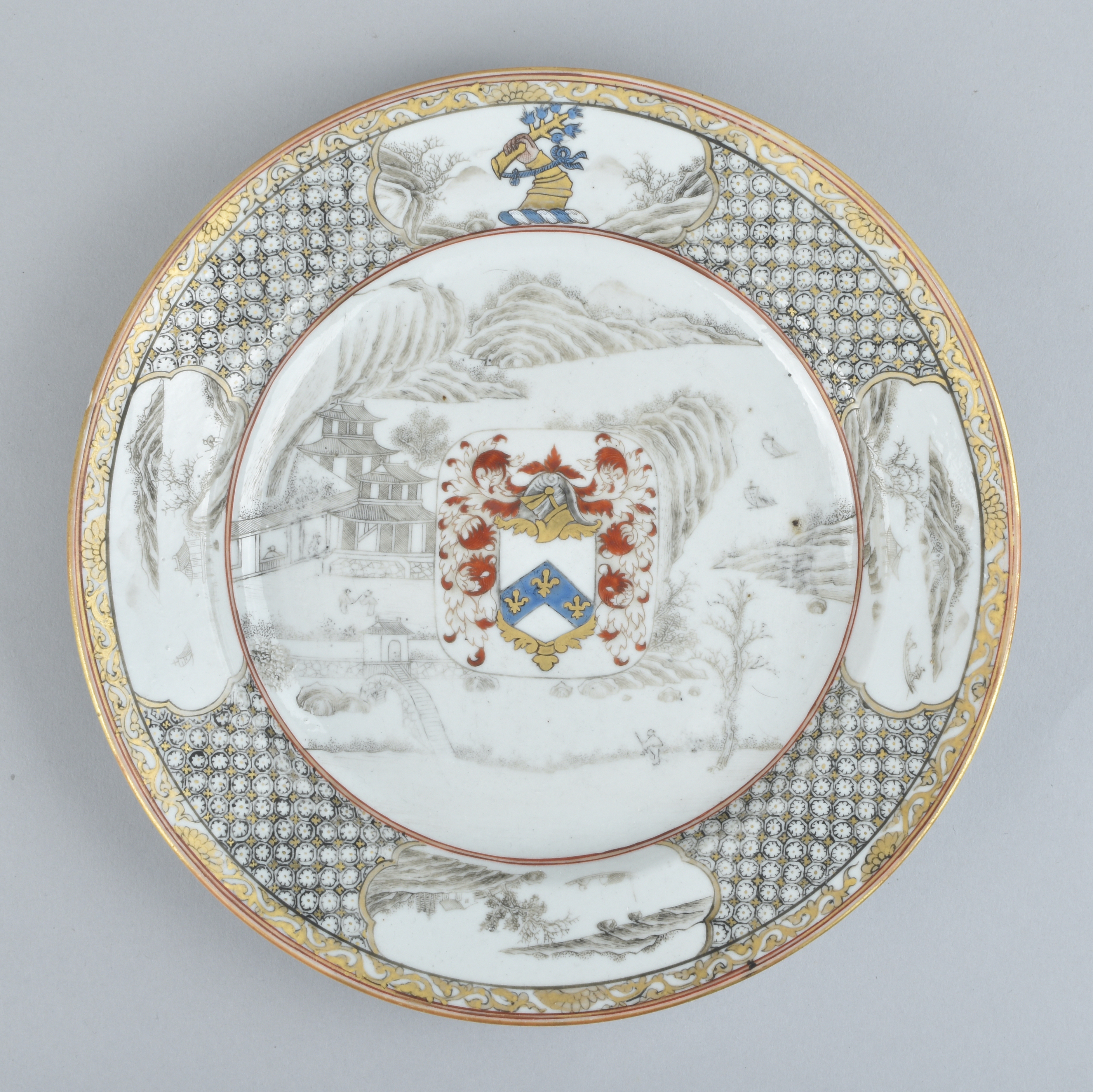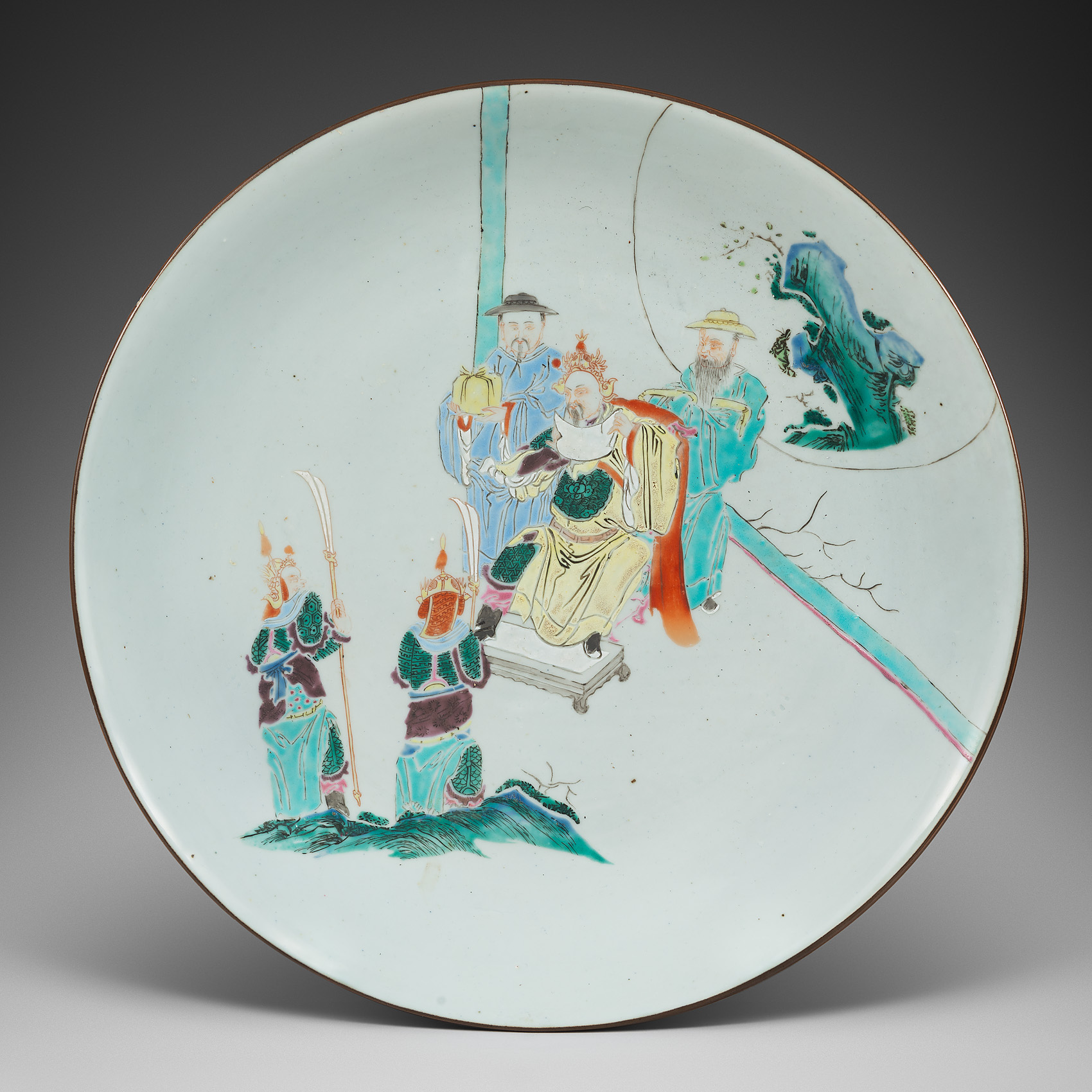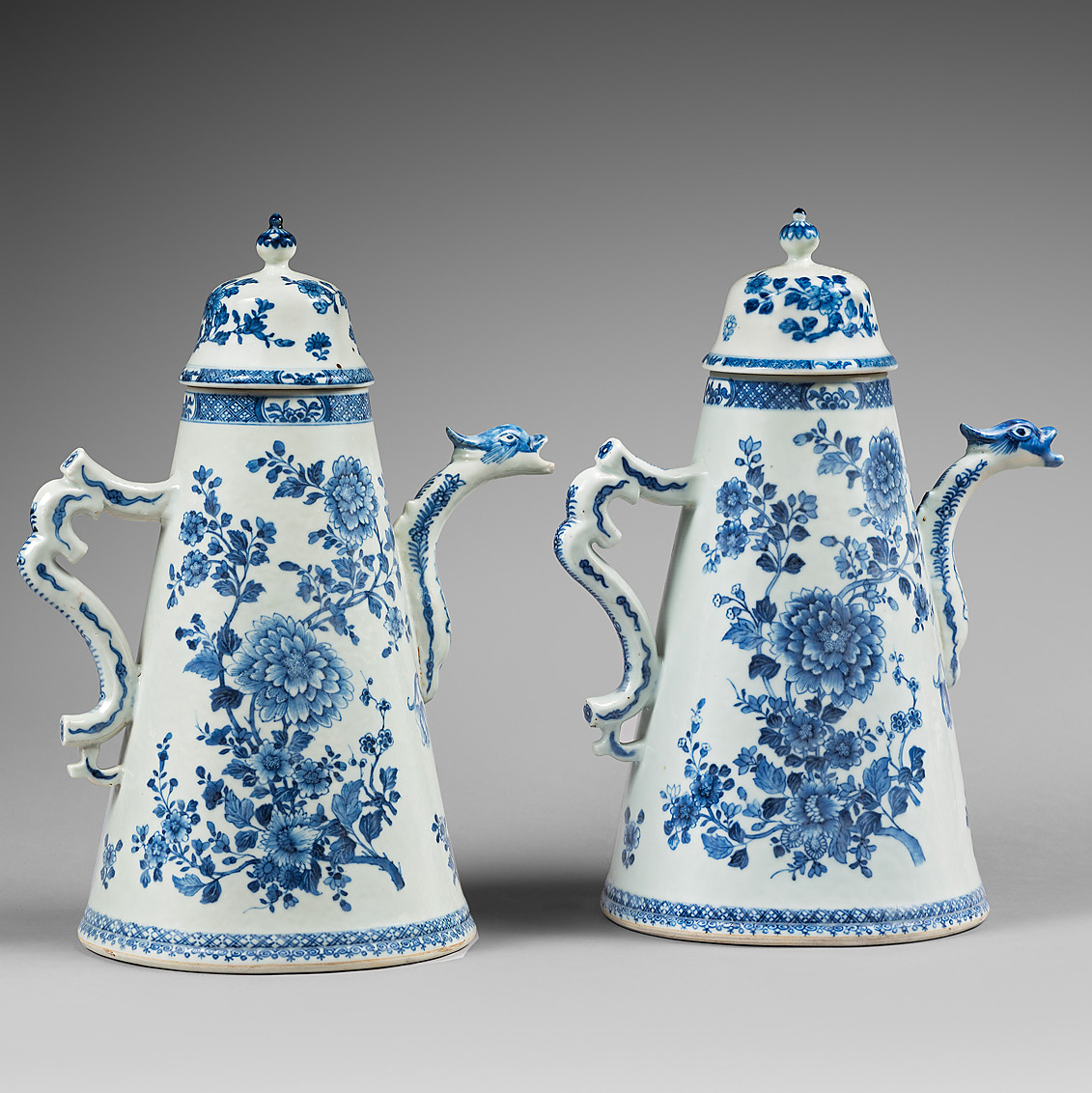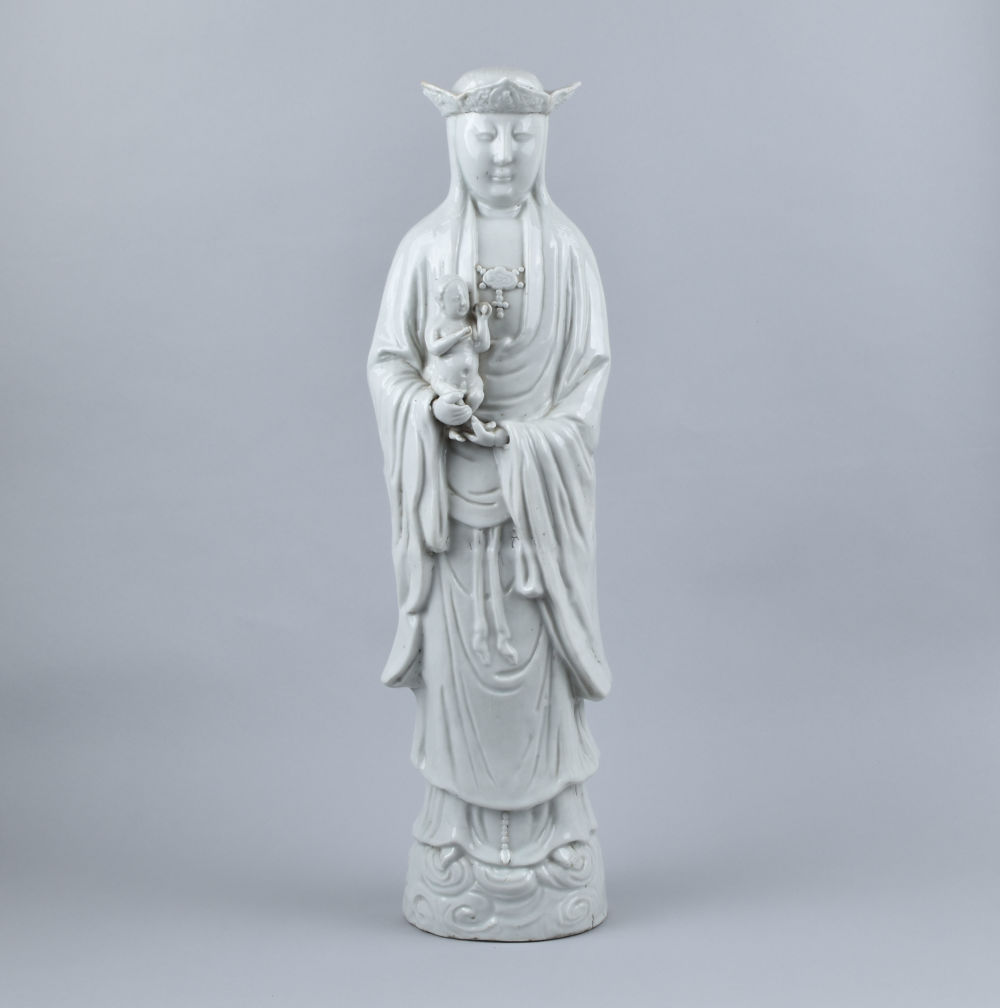
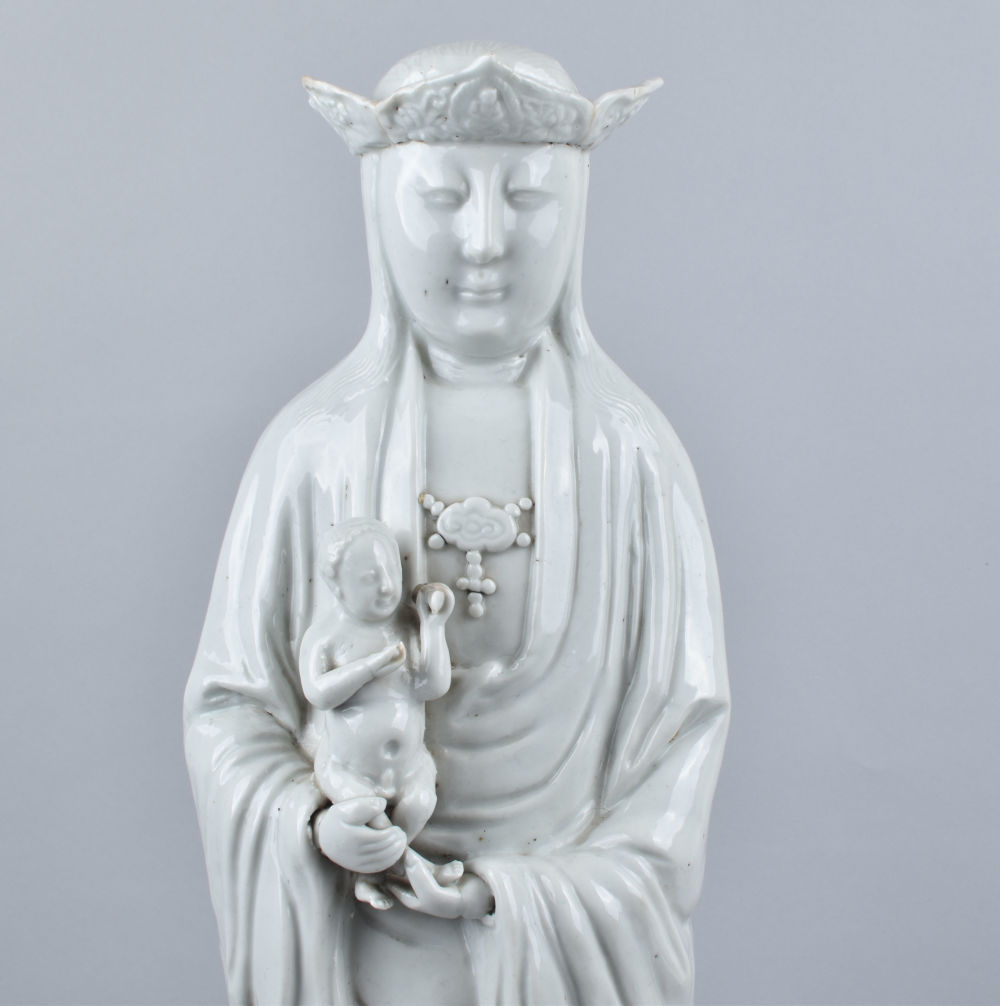
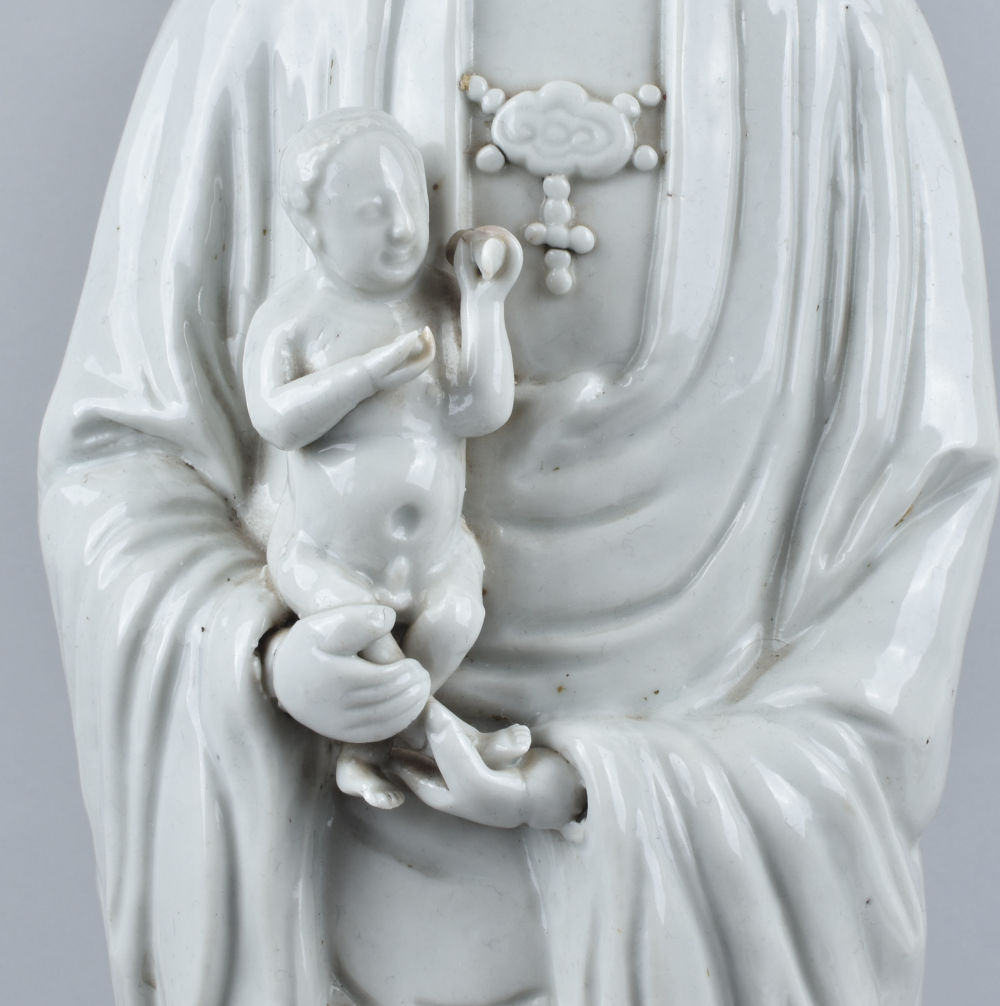
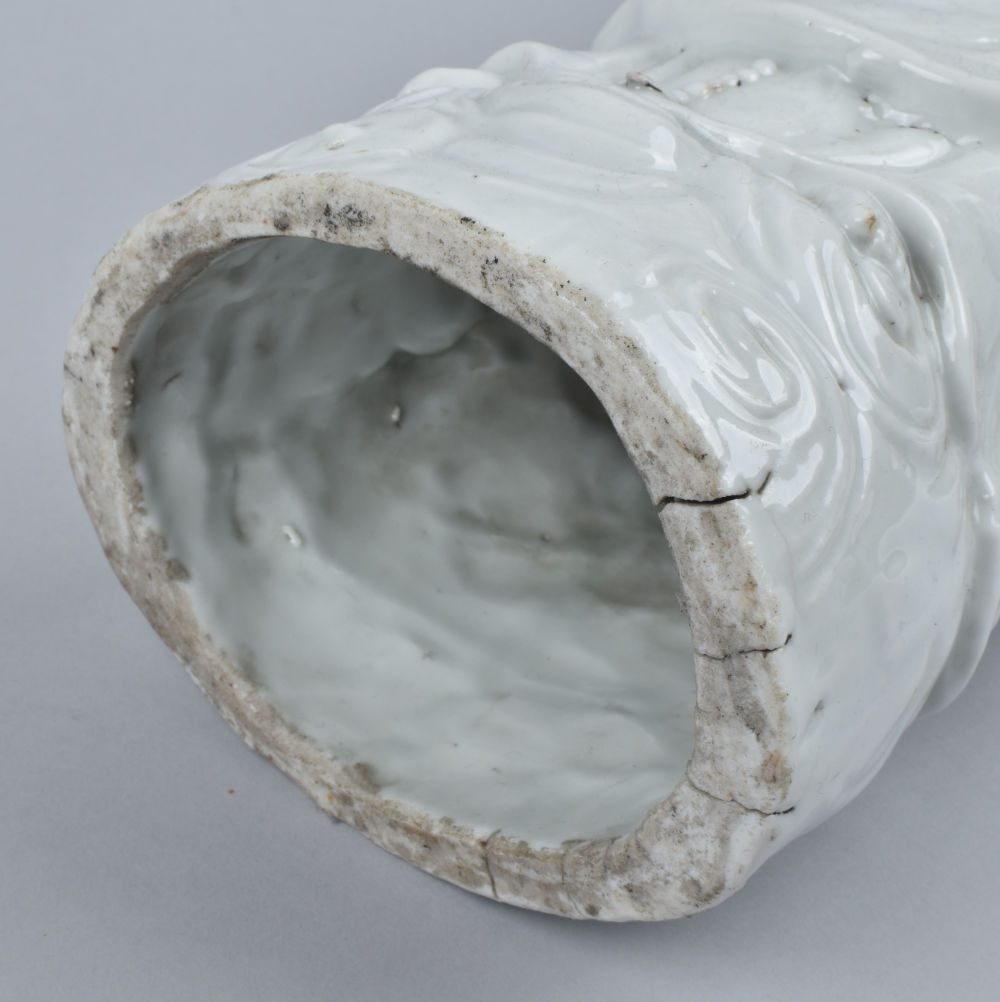
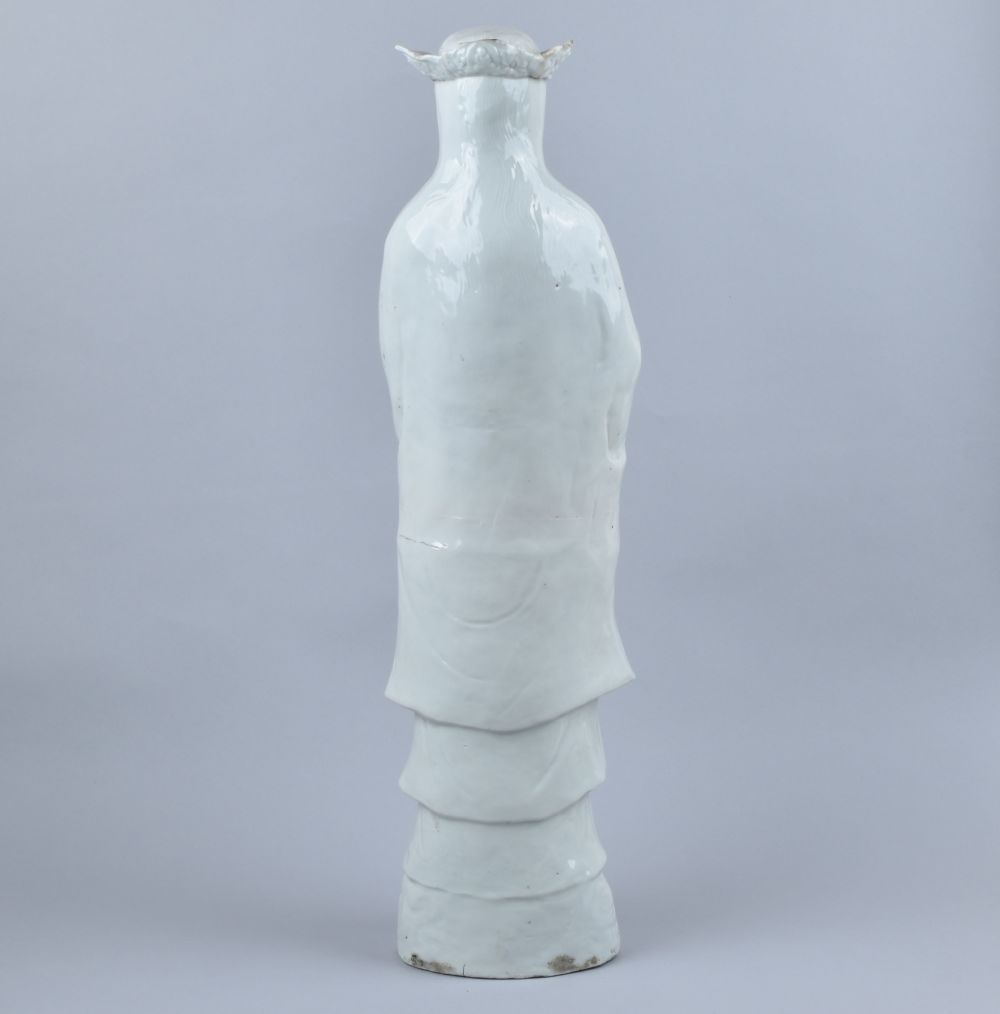
A very large Chinese Blanc-de-Chine figure of Guanyin. Kangxi period
Modelled holding a young boy in her right arm, wearing loose robes and standing on a rockwork mound.
- Country:
- China
- Period :
- Kangxi (1662-1722)
- Material:
- Porcelain
- Dimension:
- 21.61 in. (55 cm)
- Reference :
- C700
- Status:
- sold
Related works
A pair of large Guanyin from a different model is in the collection of the English Royal family, in the Chinese Lobby at Windsor Castle (collection number RCIN 58840). They are illustrated in John Ayers’ volume ‘Chinese and Japanese Works of Art in the Collection of Her Majesty The Queen, 2016, C&J pp.39-0.
Notice
Tall Dehua figures of such as this were popular among European royalty and nobility in the 17th century. Large figure figures of Guanyin, also moulded in two parts and fired separately, are noted in the inventory (1716-18) of the Danish Royal Cabinet of Curiosities, within Rosenborg Castle (Donnelly, P. J. Blanc de Chine, Faber and Faber, pl73, 74).
Large Blanc-de-Chine figure of Guanyin can be found at the Chinese Pavilion at Drottningholm, Sweden. Records show that Queen Hedrig Eleanora of Sweden purchased a pair at Drottingholm along with many other blanc-de-chine figures in the 1690’s (Setterwall, A. et. al. The Chinese Pavilion at Drottingholm, inventory FE44, HGK875/876 pl.1).
These models of Guanyin are characteristic of Dehua craftsmanship in that they were constructed in two separately-fired pieces, designed to fit together. Ming dynasty figures were often hand-modelled and finished. By the Kangxi period, potters had developed moulding techniques. On the inside of these models it is sometimes possible to see the maker’s finger marks from where they pushed the clay into the mould, as with the two figures of Guanyin described here.
As an important part of Chinese religious life and art, Guanyin was one of the most popular figures created in the Dehua kilns during the Ming (1366-1644) and early Qing (1644-1911) dynasties. She is known as the patron of mariners, and as a ‘bringer of sons’. She is often depicted carrying young boys, as these are, or standing on waves with water dragons, to reflect these beliefs. In China, these figures were often placed in household altars and worshipped as devotional images, or given as auspicious gifts.




















